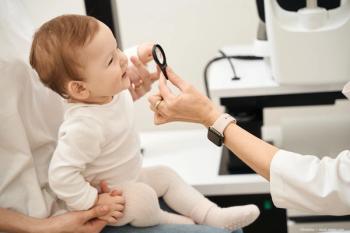
Ocular manifestations of COVID-19 in newborns
All of the newborns in a recent study had ocular manifestations, the most common being periorbital edema and hemorrhagic conjunctivitis,
Patients of all ages are affected by the COVID-19 virus, with most of the effects of the virus are evident in the respiratory tract and as microvascular damage.
While ophthalmologic findings are less common, they do occur, according to a study1 by investigators from the Instituto de Salud del Estado de Mexico, Toluca, Mexico, led by first author Luis Gilberto Pérez-Chimal, MD.
Pérez-Chimal pointed out that COVID-19 has been associated with ophthalmologic changes that include ocular external diseases, such as conjunctivitis, and intraocular changes, including inflammation and microvascular alterations.
Study of ocular effects of COVID-19 in newborns
The investigators conducted a recent study1 that included 15 newborns (8 females; mean gestational age, 35.2 weeks; range, 30-40 weeks; average birth weight 2238.7 grams; range, 1140 to 4350 grams).
On admission, the mothers and newborns were tested for SARS-CoV2.
Newborns with positive reverse transcriptase-polymerase chain reaction tests were isolated in a neonatal intensive care unit and included in the study. Ten of the mothers tested positive for SARS-CoV-2.
The systemic findings observed in the newborns included Apgar scores below 7 in 9 newborns (60%) at 5 minutes, fever in 13 (87%), tachypnea in 13 (87%), neonatal jaundice in 6 newborns (40%), and sepsis in 5 (33%).
Cardiovascular and respiratory alterations were present in 4 and 9 babies, respectively. A blood transfusion for anemia was required in 7 babies, seizures occurred in 2, and cardiac arrest with successful resuscitation occurred in 3.
Of the 15 newborns, mechanical ventilation was started in 7 (47%) and supplemental oxygen was administered to the other 8 (53%) newborns.
All newborns had periorbital edema, which was the most frequent finding, followed by chemosis and hemorrhagic conjunctivitis in 11 newborns (73%) and ciliary injection in 8 (53%) newborns.
All 15 newborns also had hyaline secretion. Corneal edema was present in 6 babies (40%). Rubeosis and posterior synechiae were seen in 1 (7%) full-term newborn.
Eight newborns had abnormal fundus findings: oxygen-induced retinopathy in 2 (13%), retinopathy of prematurity in 3 (20%), subtle cotton wool spots in 2 (13%), and vitreous hemorrhage in 1 full-term baby (7%).
“All newborns in our study had ocular manifestations, the most common being periorbital edema and hemorrhagic conjunctivitis; 53% had retinal findings,” the investigators concluded. “The higher frequency of findings may be due to the multiple comorbidities and weakness in the patients. The mechanism of ocular injury in this study is unknown and may be related to prematurity, hemodynamic compromise, mechanical ventilation, or SARS-CoV2.”
Reference
1. Pérez-Chimal
Newsletter
Don’t miss out—get Ophthalmology Times updates on the latest clinical advancements and expert interviews, straight to your inbox.













































